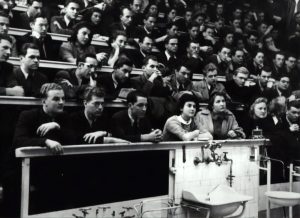The Unexpected Connections Between Car Culture and Social Trends
When we think of car culture, we often conjure up images of sleek sports cars, roaring engines, and luxurious interiors. But there is much more to car culture than just fancy cars. It has deep-rooted connections with social trends that are often overlooked. From the rise of suburban living to the impact of technology, car culture has intertwined with various social movements and changes. In this article, we will delve into the fascinating world of car culture and its unexpected connections with social trends.
The Rise of Suburban Living
One of the earliest connections between car culture and social trends can be traced back to the rise of suburban living in the 1950s. As cities became more crowded and polluted, people started moving to the suburbs in search of a better quality of life. With the development of modern highways and affordable cars, it became easier for families to commute to work and school. This resulted in the growth of suburban communities, which revolved around car culture. Streets were designed for cars, and shopping centers and drive-in movie theaters became popular hangout spots.
The Birth of the Road Trip
As suburban living became more prevalent, people started embracing the idea of the road trip. The ability to travel long distances by car opened up a whole new world of possibilities. Families could now explore new places and experience different cultures. This led to the popularization of the American road trip and the emergence of iconic destinations, such as Route 66. The road trip became associated with adventure, freedom, and self-discovery, which resonated with younger generations and their desire for independence.
The Evolving Car Culture
As the decades passed, car culture continued to evolve and adapt to changing social trends. In the 1960s and 1970s, muscle cars dominated the scene, reflecting the rebellious spirit of the counterculture movement. Then came the gas crisis of the 1970s, which led to the development of more fuel-efficient cars and the rise of the environmental movement. In the 1980s and 1990s, car culture shifted towards luxury and status symbols, aligning with the materialistic values of the decade.
The Impact of Technology
With the turn of the 21st century, technology started playing a more significant role in car culture. The rise of smartphones and social media has transformed the way we view and interact with cars. From sharing photos of our dream cars to using apps for ride-sharing, technology has influenced our relationship with cars and car culture. Electric and autonomous cars are also revolutionizing the industry and shaping the future of car culture.
The Intersection of Car Culture and Social Justice
In recent years, the conversation around car culture has expanded to include social justice issues. From environmental concerns to accessibility and safety, there are many pressing issues that intersect with car culture. For example, the fight for better public transportation options in urban areas and the push for sustainable practices in the automotive industry highlight the connection between cars and social justice.
The Shift Towards Sustainability
The push for sustainability has also led to a transformation in car culture. Electric and hybrid cars, as well as car-sharing and bike-sharing programs, have gained popularity. The focus on sustainability has not only influenced the type of cars we drive but also how we view and use them. Instead of flaunting luxury cars, many people are now opting for sustainable and eco-friendly options as a statement of their values.
In Conclusion
Car culture has a long and complex history, intertwined with various social trends. From the rise of suburban living to the impact of technology and sustainability, car culture has adapted and evolved along with society. As we continue to navigate new social trends and challenges, it will be interesting to see how car culture will continue to shape and be shaped by the world around us.











